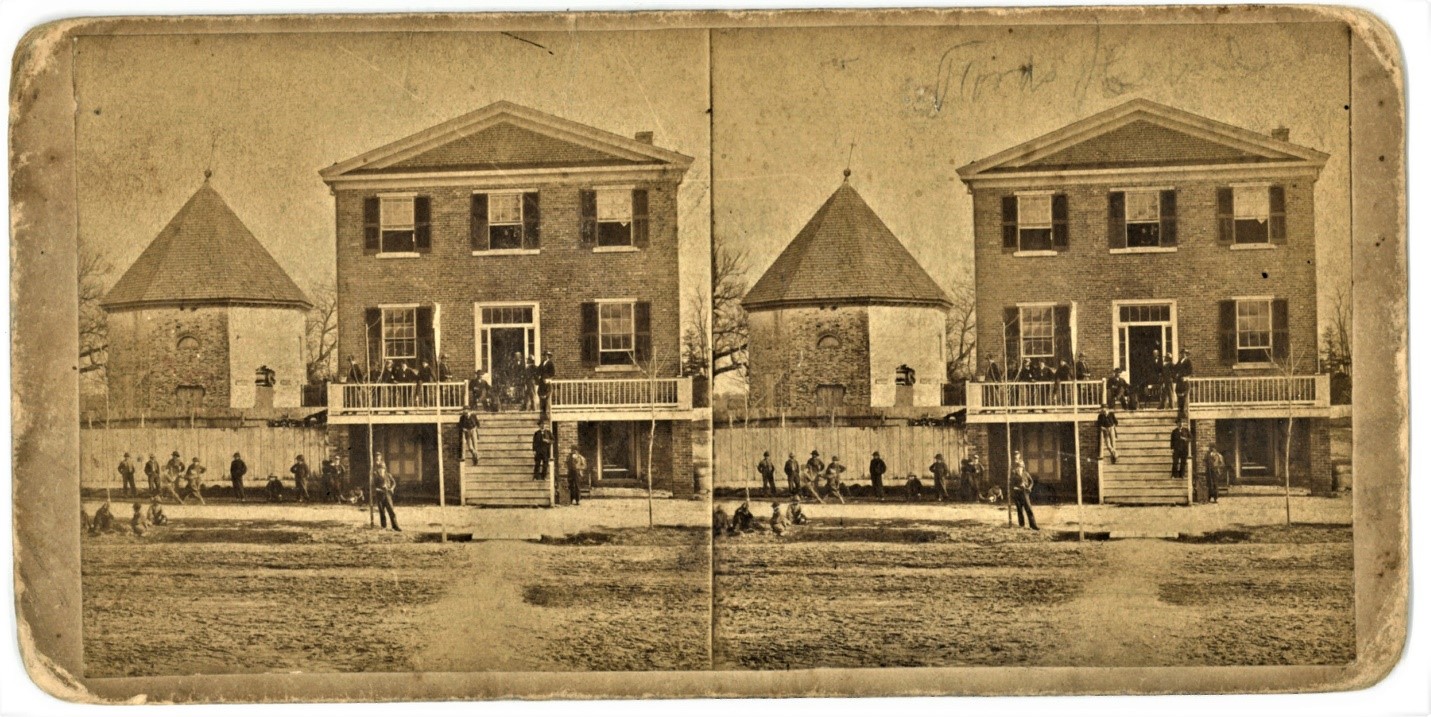This post is written by donor and alumnus Kelvin Ramsey ('79).
I am old enough that several of the places that I have lived over the years have been torn down, including the house on South Boundary Street that I lived in for two years as a W&M student. To all those who wander up and down DoG Street: think about the street's very different appearance before Colonial Williamsburg and many buildings were removed during its development. The stereoview below shows a very familiar building (the powder magazine), which had a very different setting prior to CW.
 Stereoview showing DoG Street, ca. 1872
Stereoview showing DoG Street, ca. 1872
This stereoview was likely taken in 1872. At that time, there was a building adjacent to the powder magazine, and it was known for most of its life as the Hotel Williamsburg or the DuPont Hotel. During the Civil War it served as a District Court House, and in 1881 it was apparently a rail station (though, where were the tracks?). From 1925 to 1930, it was Dr. Baxter Bell’s Hospital. Prior to that, in 1918 and 1919, it housed the Red Circle Club. The Club was similar to a USO and catered to WWI veterans returning from the war. I like this image because of the people. I think there is one woman in the image, possibly with a dog on a leash. There are two boys boxing that are partly ghosts because they were moving when the picture was taken. Everyone is wearing a hat except for the man in the doorway. There are also two people looking out the window above the doorway. There is a group of boys on the lower left at street level.
DoG Street is unpaved and from its appearance looks like it was a muddy mess when it rained. Some attempt at beautifying the street must have been made with the newly planted trees along the street. No leaves on the trees suggests that the image was taken in the winter or early spring. The powder magazine was showing its age: there is a big hole in the wall and the windows and doors are boarded up.
The Hotel building was torn down in the 1930s. If you go to the DeWitt Wallace Museum, there is a looping film that was taken from a vehicle that went down DoG Street and back, recording the buildings along the street. This building was still there when the film was taken. The next time you walk or run down DoG Street, think of the life of the street, not just during Colonial times, but also throughout Williamsburg's longer history. For more stereoview images of Williamsburg and a variety of subjects, visit the Special Collections Research Center (SCRC).